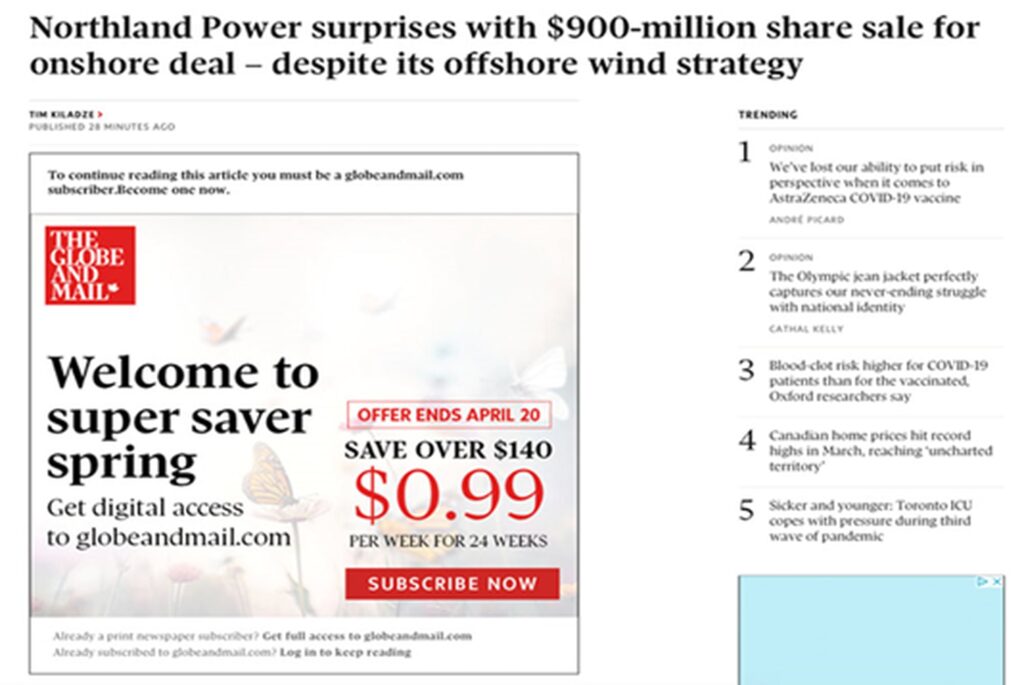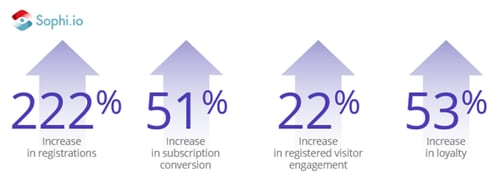The Globe and Mail launched a hybrid paywall in 2012 — applying a simple meter for most articles, with editors deciding to place about 10% of articles behind a hard paywall.
Like most news organisations, we were heavily reliant on advertising revenue at the time and did not want to risk killing the golden goose. However, we knew that the future of a sustainable journalism business depended on how aggressively we could acquire and retain subscribers.
We rapidly started to see a bottleneck for both new subscription growth and registration growth from our static paywall. We tried to tighten the paywall by increasing the total number of hard-paywalled articles and experimenting with the number of articles one could read via the meter — but that either depressed user engagement significantly or we missed out on potential subscriptions because we asked the wrong people at the wrong time.
To break through and create sustainable growth, we needed to redefine how we decided when to present a paywall or a registration wall and when to let the reader keep reading uninterrupted. In other words, we needed a fully dynamic paywall that offers one-to-one personalisation in real time to ensure we were not leaving any money on the table.

The dynamic paywall knows when to let users keep reading and when to ask them to subscribe.
We were finally in a position to undertake this ambitious project. We had one data scientist in 2012; the team of data scientists and engineers at the Globe now numbers 50.
How we did it
We leveraged the customer journey to train our data-science model to study readers’ sequential online behaviour and then predict when and on which article to show a paywall or registration wall (or no wall at all) to each specific reader. We also used sophisticated natural language processing techniques to ensure that we were picking appropriate articles for each reader.
Because the new paywall directly affected our new subscriber acquisition, we wanted to be careful and gradual in introducing it, using our test-and-learn methodology. We started by limiting our A/B testing to audiences in a few small cities. After seeing encouraging results, we then removed our geo limitation and switched to testing it on small segments of our entire audience and gradually increased those segments.
During our transition to the new paywall, we encountered COVID. We needed to balance competing needs — driving subscriptions while ensuring that we fulfilled our mission in providing the public with vital information on a poorly understood, swiftly spreading disease. So we implemented various constraints within our dynamic paywall, which actually diminished its performance in favour of ensuring that Canadians understood how to stay safe and healthy in unprecedented times.
We also ensured the newsroom retained the power to manually override any algorithmic paywall decisions for cases where it believed the content must be free to all readers because it was a matter of public interest.
Despite having many complicated rules, we were still pleased to see stunning results. Our goals were to increase the subscription and registration conversion rates without diminishing reader engagement.

The personalisation paid off, with increases across the board.
The results:
- Subscription revenue gained was 10x the advertising revenue given up.
- Our revenue attributable to the paywall alone increased to US$10 million annually from US$2 million earlier with our old paywall.
- 51% increase in subscriptions (vs. our old paywall, which we A/B tested against simultaneously).
- More than 200% increase in registrations.
- 22% increase in registered visitor engagement. We were surprised to see that engagement actually increased, but that is because our paywall understands when to leave readers alone and when to ask for either an e-mail address or for money.
We also encountered another unexpected success: We typically run a few “flash sales” a year and usually see a drop in subscription gains soon after each one. But with the fully dynamic paywall algorithm, the diminishing subscription trend that followed flash sales has disappeared.
*First published on www.inma.org

